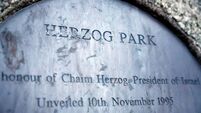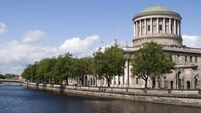Part of 2,500-year-old fort falls into sea

The Dún Beg or Dún Beag fort which sits on a promontory near Ventry on the Dingle Peninsula has partially collapsed in recent days following storm Eleanor.
The fort, one of several on the peninsula, is a national monument managed by the OPW and accessed through private lands. The pathway too has suffered damage.













